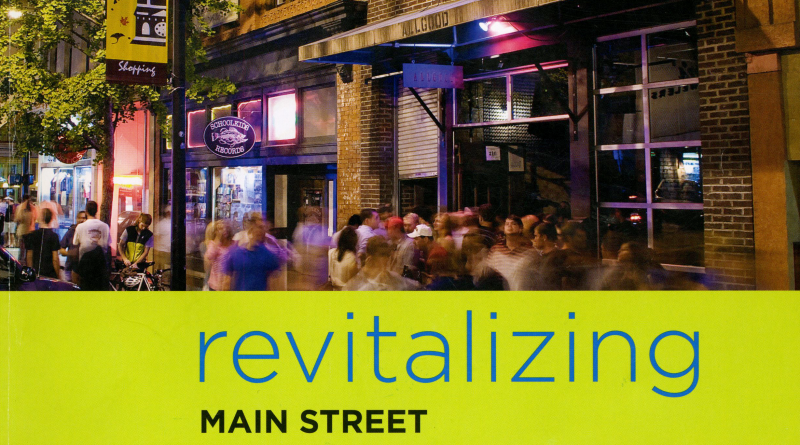Revitalizing Main Street: A Practitioner’s Guide to Comprehensive Commercial Revitalization. (2009). National Trust for Historic Preservation.
A new comprehensive resource from the National Trust for Historic Preservation offers readers a detailed look at the many aspects of downtown growth and development, including a wide range of best practices and case studies. Revitalizing Main Street delves into the topics that set the foundation for a successful commercial district. Chapters on parking, transportation, business assistance, heritage tourism, zoning, and planning complement sections on raising funds, working with volunteers, and preserving and reusing historic resources.
The 224-page, 22-chapter book discusses the “four points” of the Main Street approach, a historic preservation-based economic development tool that can be used to revitalize commercial districts:
- Organization—strategies to encourage stakeholders to work toward the same goal and to assemble the appropriate people and financial resources to implement your program
- Promotion—best practices to create a positive image of the downtown area and to encourage consumers and investors to live, work, shop, play and invest
- Design—ways to create an inviting atmosphere, through facade, streetscape and other design improvements as well as ongoing maintenance of the downtown area
- Economic Restructuring—approaches to strengthen the competitiveness of existing businesses, recruit new businesses, and convert unused or underused space to more productive uses
Each chapter highlights different features of a successful downtown, including master planning, public improvements, sustainability, and effective advocacy for Main Street programs, safety, heritage tourism, and real estate investment. Each chapter features descriptions, best practices, and a list of websites, publications, and articles for additional information.
Transportation weighs most heavily in the section focusing on design, with two chapters focusing on managing traffic and parking in Main Street areas. The traffic management chapter discusses the importance of making the circulation system more “customer friendly” to downtown businesses by being more pedestrian friendly with wide heavily-used sidewalks, two-way streets, streetscape improvements, and low speed limits. NJDOT’s “Flexible Design of New Jersey’s Main Streets” report is featured as one of the noted resources.
The parking chapter discusses the difference between a parking supply problem and a parking management problem and recommends that municipalities do detailed parking studies to accurately determine their true parking needs. Local parking policies and design options are also discussed, including the importance of shared parking, on-street parking, and the economic cost of excessive parking and underutilized land.
The report can be purchased and parts of the report can be read on the National Trust’s website.

